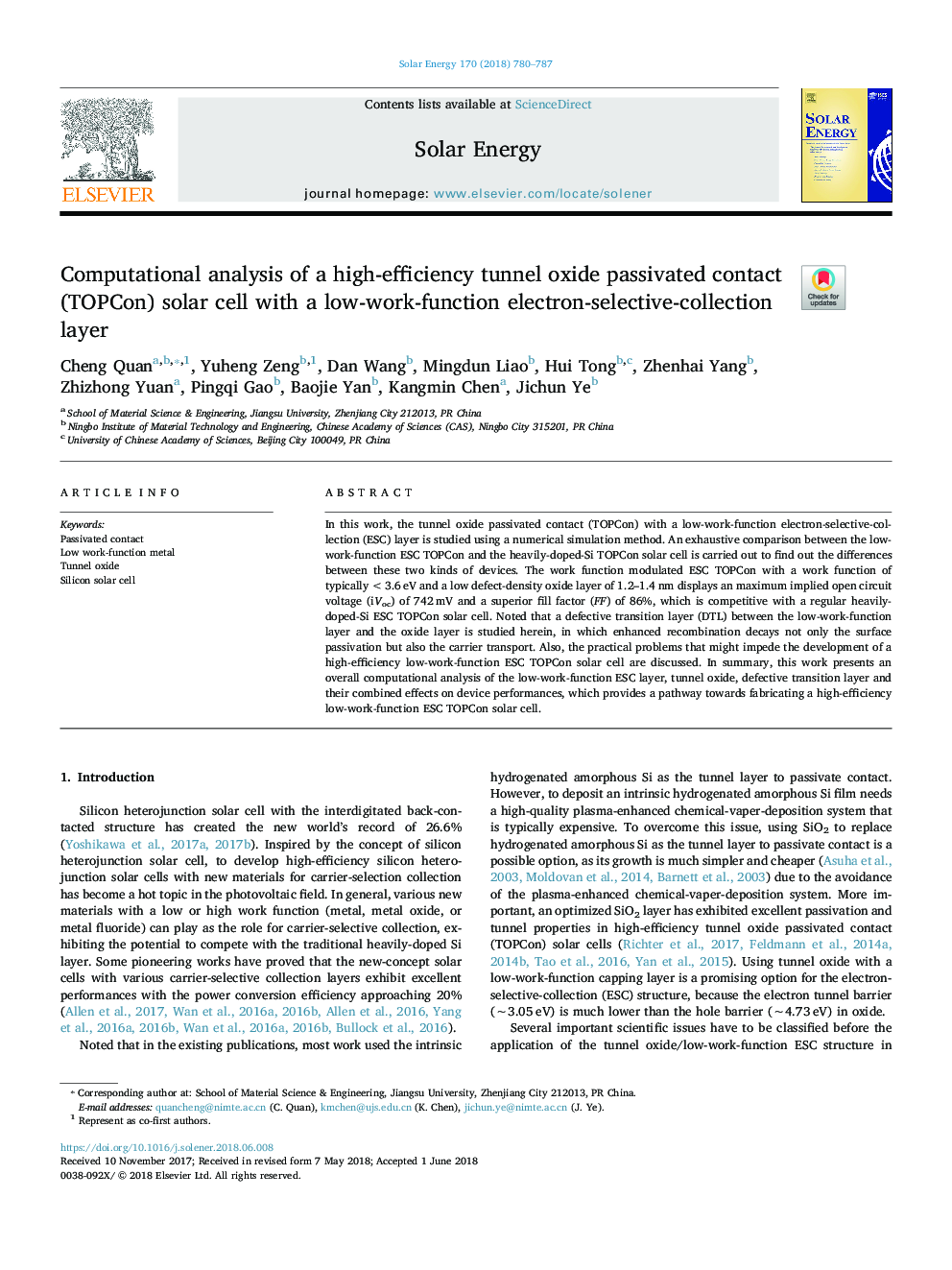| Article ID | Journal | Published Year | Pages | File Type |
|---|---|---|---|---|
| 7935121 | Solar Energy | 2018 | 8 Pages |
Abstract
In this work, the tunnel oxide passivated contact (TOPCon) with a low-work-function electron-selective-collection (ESC) layer is studied using a numerical simulation method. An exhaustive comparison between the low-work-function ESC TOPCon and the heavily-doped-Si TOPCon solar cell is carried out to find out the differences between these two kinds of devices. The work function modulated ESC TOPCon with a work function of typically <3.6â¯eV and a low defect-density oxide layer of 1.2-1.4â¯nm displays an maximum implied open circuit voltage (iVoc) of 742â¯mV and a superior fill factor (FF) of 86%, which is competitive with a regular heavily-doped-Si ESC TOPCon solar cell. Noted that a defective transition layer (DTL) between the low-work-function layer and the oxide layer is studied herein, in which enhanced recombination decays not only the surface passivation but also the carrier transport. Also, the practical problems that might impede the development of a high-efficiency low-work-function ESC TOPCon solar cell are discussed. In summary, this work presents an overall computational analysis of the low-work-function ESC layer, tunnel oxide, defective transition layer and their combined effects on device performances, which provides a pathway towards fabricating a high-efficiency low-work-function ESC TOPCon solar cell.
Related Topics
Physical Sciences and Engineering
Energy
Renewable Energy, Sustainability and the Environment
Authors
Cheng Quan, Yuheng Zeng, Dan Wang, Mingdun Liao, Hui Tong, Zhenhai Yang, Zhizhong Yuan, Pingqi Gao, Baojie Yan, Kangmin Chen, Jichun Ye,
